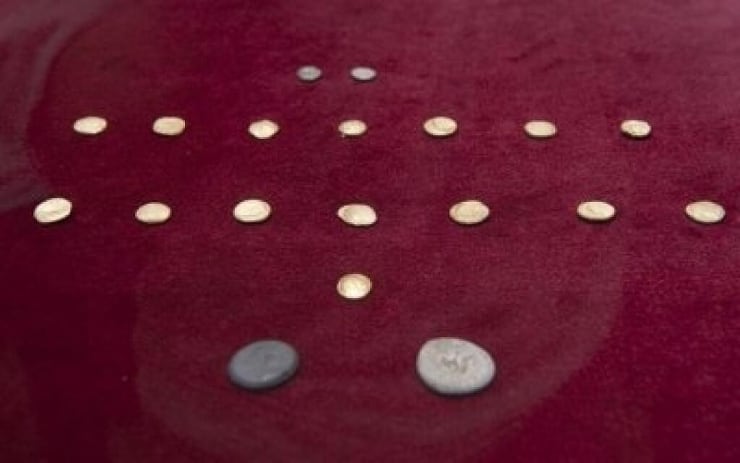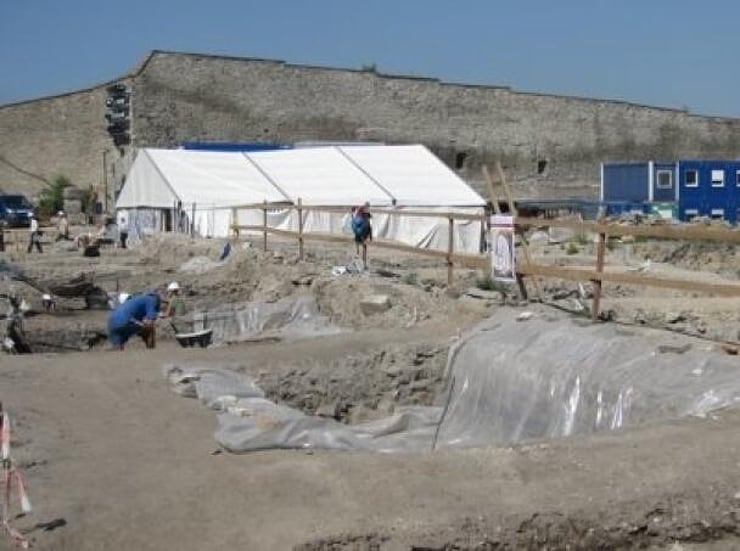2. 7. 2009 Celtic coins at Bratislava Castle
Categories: Minting - Numismatics , Castles, strongholds and extinct places , Finds and rescue research in the Czech Republic , Calendar
Rare Celtic coins and part of a building from the Roman Empire were unearthed by archaeologists in the area of the reconstructed Bratislava Castle. They confirmed that the capital was an important centre of power in antiquity.
The archaeologists were pleasantly surprised by the discovery, as they found it in a part of the riding hall where they had not expected anything of the kind. "At first we thought it was some kind of medieval building, but we came across fragments of amphorae that we recognise from Rome," said archaeologist Margaréta Musilová.
They discovered the remains of the most important Roman building in the once Celtic territory north of the Alps. It was probably built by Celtic rulers with the help of Roman builders. In addition, archaeologists found nineteen gold and silver Celtic coins in the ground. These were probably also minted by the Celtic rulers. The coins bore the inscriptions Biatec and Nonnos. "These are the names of the first Celtic princes who ruled on our territory and minted coins with their names on them," the Slovak archaeologist noted.
It was a unique find for Slovak archaeologists. "Colleagues from abroad said it was the Slovak Pompeii," Musilová smiled. The discovery confirmed that Bratislava was an important Celtic seat of power on a pan-European scale. Until recently, there were historians and archaeologists who denied that there was actually a Celtic oppidum on the site.
Researchers have not only dug in the riding hall. Dozens of excavations were carried out on the north side of the castle grounds. They found a child skeleton from the first century BC, pottery and tools dating back 4,500 years. There are also pieces of weapons from the First World War. The archaeologists carried out the excavation while the castle was being reconstructed.
Based on the new findings, historians have begun to talk about ancient Bratislava having a Celtic oppidum, the seat of power, on a European level. Archaeologists also discovered cobblestones. "In the northern wing we discovered high-quality paving inlaid with small stones. We also found shards of amphorae. I have only known such amphorae from Rome and Italy," Musilová explained.
During the reconstruction, elements from earlier periods such as the Middle Ages, the Renaissance and the early Baroque reconstruction were also preserved. After the renovations were completed, the previously inaccessible historical areas were opened to visitors.
The castle was built on an old Slavic hillfort from the ninth century. After the demise of Great Moravia, it became a border castle of the Hungarian state. Due to its atypical shape, the castle is popularly known as the "upside-down table".


Sources: www1.pluska.sk, www.novinky.cz
The article is included in categories: